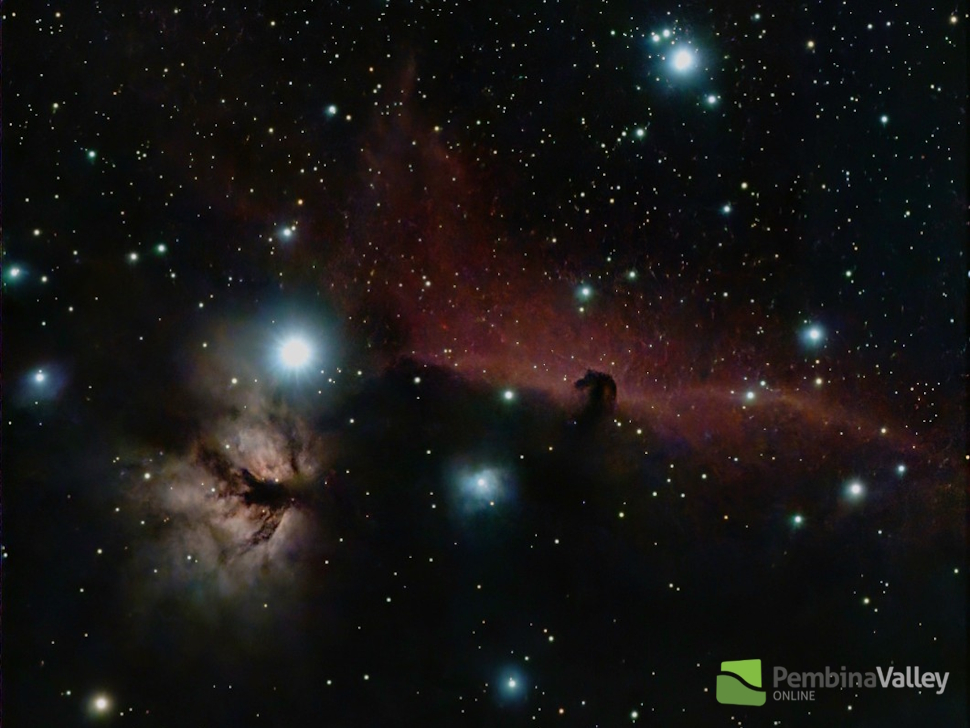If you’ve ever looked up at the stars and felt a twinge of cosmic wonder, now is your time to lean in. The Perseids meteor shower is lighting up the night sky and Kenton Dyck from the Astro Club says it’s one of the most spectacular astronomical events of the year. Even better? You don’t need a telescope to see it.
“You just need the good old Mark 1 eyeball,” Dyck laughs. “No gear. No telescope. Just your eyes and a bit of time under the stars, it’s gorgeous every time.”
What are the perseids, anyway?
The Perseids happen every summer as Earth passes through the dusty trail of Comet Swift-Tuttle. These tiny fragments of space debris hit our atmosphere at high speeds, burning up and creating brilliant streaks of light.
“This comet is huge,” says Dyck. “It’s about 26 kilometers across, which is almost half the size of the asteroid that wiped out the dinosaurs. One astronomer called it a ‘shot across our bow’ a reminder of just how much power is out there.”
And it’s not going away. Swift-Tuttle will return in 2164, but its dusty leftovers are what we fly through every August.
When and how to watch the perseids
The Perseids officially began on July 15th, but the peak nights, where you might see up to 100 meteors an hour are August 11th to 13th.
“The best viewing is always after midnight,” Dyck advises. “Give your eyes 25 minutes to adjust to the darkness, avoid bright lights, and head out somewhere dark. The darker the sky, the better the show.”
Manitoba’s wide open skies and relatively low light pollution make it a prime spot for stargazing.
Why do they glow different colours?
Ever notice that some shooting stars have a green, blue, or orange tint? That’s real and it’s all about science.
“When these meteors hit our atmosphere, they’re going fast, it’s like the world’s scariest belt sander,” says Dyck. “Using something called spectroscopy, we can actually determine what elements are inside them based on the colour of the light they emit.”
For example:
-
Yellow/Orange = Sodium
-
Green = Copper or Nickel
-
Blue = Magnesium or Calcium
-
Purple = Potassium or other high-altitude effects
“You absolutely can see those colours with the naked eye,” Dyck says. “It’s subtle, but when you spot it, it’s incredible.”
More meteor showers coming your way
The Perseids aren’t the only show in town. There are three overlapping meteor showers lighting up the skies this summer:
-
🌠 Delta Aquarids (South): Peaks July 28–29
-
🌠 Alpha Capricornids: Peaks July 30
-
🌠 Perseids: Peaks August 11–13
“How do we have three meteor showers going on at once?” Dyck laughs. “Because we live in an absolute shooting gallery. Earth moves through hundreds of tons of space dust every year.”
In fact, you can physically find some of that space dust yourself.
“Take a rare earth magnet and run it along a rain gutter,” Dyck says. “You’ll pick up tiny bits of meteorite. Literal space dust, right from above.”
What Else Is Up There?
If you missed July’s Buck Moon, don’t worry, there’s always something cosmic going on. Kenton says a few great tools can help you plan your stargazing nights.
Web App Recommendation:
“I use Stellarium all the time. It shows you a map of the night sky based on your location — super accurate and free to use.”
Calendar of Events:
“There’s a site called StarWalk.com where you can enter your location and get a night-by-night breakdown of what’s happening in the sky.”
Space is closer than you think
From showers of ancient comet dust to mystery objects flying in from deep space (remember *‘Oumuamua’?), Dyck says the universe is always moving and always has stories to tell.
“We’re constantly being reminded how tiny we are,” he says. “But also how connected we are to everything out there.”
And when it comes to seeing it? All you need is a dark sky, a little patience, and a sense of wonder.
Fall with the Astro Club
Kenton also teased some big news for fans of the Astro Club.
“I’ll be announcing our Fall 2025 season soon,” he says. “We’re hoping to do more public observation nights this year. I think there’s real value in standing under the stars together and being reminded of the big picture.”
Top 3 Tips for Meteor Shower Viewing
-
Go dark – Get away from city lights.
-
Be patient – Give your eyes 25 minutes to adjust.
-
Stay late – Peak viewing is after midnight.
Follow Kenton Dyck and the Astro Club on Facebook and Instagram for updates on fall events, skywatching nights, and everything cosmic.
Let’s keep looking up.
